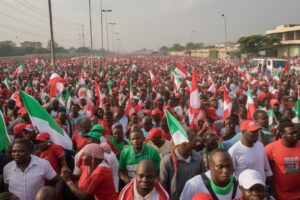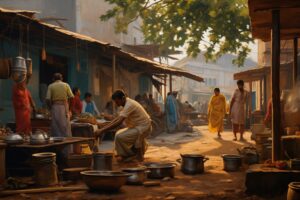Starbucks, the globally recognized coffee chain, has found itself facing a unique challenge in the vibrant coffee-loving nation of Vietnam. Despite its widespread success around the world, the journey of Starbucks in Vietnam has been marked by intriguing dynamics and hurdles that have hindered its triumphant rise. Let’s delve into the intricacies of this situation and understand why Starbucks has been unable to replicate its dominance in this coffee-savvy country.
The Quest for Coffee Love
Vietnam is a nation that reveres coffee, with its people sharing an inherent bond with this aromatic elixir. However, the Vietnamese preference for coffee has not translated seamlessly to a preference for Starbucks. The numbers paint a clear picture – Starbucks accounted for a mere 2% of Vietnam’s thriving $1.2 billion coffee market in 2022, as per Euromonitor International [1]. This striking discrepancy raises the question: why does the global coffee titan struggle to captivate the hearts of Vietnamese coffee aficionados?
A Taste of Localization
One key factor lies in the appreciation for local coffee flavors deeply rooted in Vietnamese culture. Nathanael Lim, an analyst at Euromonitor International, highlights that Starbucks’ limited presence in Vietnam is attributed to the local consumers’ unwavering fondness for native coffee varieties [1]. This affinity for homegrown coffee experiences has deterred Starbucks from becoming a dominant player in the Vietnamese coffee landscape.
A Clash of Coffee Cultures
Starbucks’ offerings, while appealing to a diverse global audience, face a challenge when pitted against Vietnam’s coffee culture. The menu’s premium pricing in a competitive market is an obstacle that Vietnamese consumers have been reluctant to overcome. With a plethora of local coffee options available, including roadside stalls and hip cafes, the menu appears relatively pricey, hampering its mass appeal [1]. Coffee consumption in Vietnam is not just a luxurious indulgence; it’s an integral part of daily life, often enjoyed at affordable roadside vendors.
A Bean Dilemma
Starbucks’ adherence to its signature Arabica beans, while consistent with its global brand, clashes with Vietnam’s robust coffee culture. Traditional Vietnamese coffee, characterized by robusta beans, resonates deeply with the local population due to its higher caffeine content and distinct flavor. The caffeine-rich robusta beans, prevalent in Vietnam’s traditional iced coffee (cà phê sữa đá), have become an integral part of the coffee experience for locals. This divergence in coffee preferences has hindered Starbucks’ ability to cater to the nuanced tastes of Vietnamese coffee enthusiasts [3].
Local Competitors and Adaptation
Starbucks’ struggles become more pronounced when compared to the success of local competitors. Highlands Coffee and The Coffee House, deeply entrenched in the Vietnamese market, have exhibited higher growth rates and revenues. Starbucks’ relatively modest number of outlets – just 34 after eight years – pales in comparison to the vast network of these local chains [2]. The inability to adapt its menu and pricing to align with Vietnamese preferences has hindered Starbucks’ quest for supremacy in this coffee-saturated land.
Conclusion
In conclusion, Starbucks’ struggle to establish a dominant presence in Vietnam’s coffee market can be attributed to a multitude of factors. The clash between global branding and local preferences, coupled with the entrenched competition from beloved local coffee chains, has created a complex scenario. Starbucks’ journey in Vietnam serves as a testament to the significance of adapting to diverse cultural tastes and embracing localization. To thrive in a coffee-loving nation like Vietnam, the path forward for Starbucks may involve a delicate blend of acknowledging local traditions while infusing elements of its international allure.

















